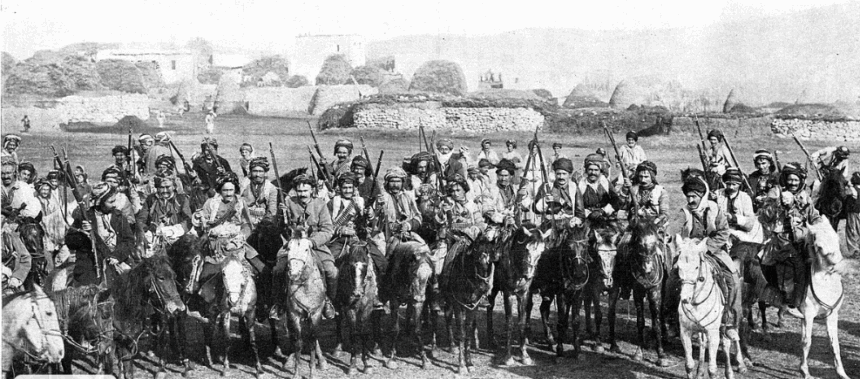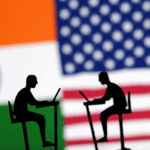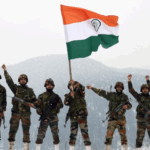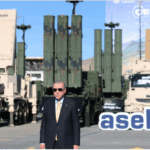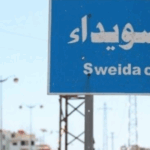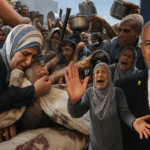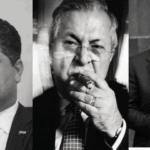The recent clashes between Druze militias and Arab tribal groups in Syria’s southern province of Suwayda have highlighted the growing significance of sub-state governance and the militarization of identity-based actors in the country’s evolving political landscape.
Since the collapse of Bashar al-Assad’s regime in December 2024, Syria has morphed under President Ahmed al-Sharaa (Jolani). Once leader of Hay’at Tahrir al-Sham (HTS), he now heads a militiabased governance model stretching across much of the country , excluding the Kurdish-controlled northeast and the Druze-populated province of Suwayda.
Following the clashes between Alawite forces and HTS last March, Suwayda has emerged as the most volatile flashpoint in Syria’s new post-Assad order. Rising tensions between Arab Bedouin tribes and Druze defense forces have erupted into large-scale violence. What began with the kidnapping of a Druze produce trader by Bedouin tribes quickly escalated into the mobilization of 41 Arab tribes who advanced deep into Suwayda’s cities, triggering a violent confrontation that underscores the broader reconfiguration of power in Syria.
Proxy Forces on the Ground, Ceasefires from Above
Tribal fighters, particularly Bedouins, had reportedly poured into Suwayda from Idlib, Hama, Aleppo, Homs, and Deir ez-Zor, rallying under jihadist slogans. It was reported that over 50,000 tribal fighters amassed in the province, likely backed or coordinated by HTS.
This coincided with Israel’s airstrikes on Damascus and its declaration that HTS’s Interior and Defense units would not be permitted to enter Suwayda—effectively drawing a red line. Emboldened by this, some Druze groups launched retaliatory attacks on Bedouin civilians, prompting graphic videos and further mobilization of tribal forces.
HTS, effectively saying “if state forces can’t enter, tribal forces will,” put forward a dangerous and uncontrollable strategy that escalates intercommunal hatred.
A U.S.- and Israeli-mediated ceasefire managed to contain the violence temporarily while permitting continued tribal presence in the region.
The first announcement of the ceasefire came from Thomas Barak, the U.S. Special Envoy for Syria. Barak stated that the Prime Minister of Israel, the President of Syria, and regional powers such as Turkey and Jordan had all agreed, under U.S. support, on a ceasefire. He also called on Druze, Bedouins, and Sunnis to lay down arms and build a unified Syria in peace with its neighbors and minorities.
The first two ceasefire attempts had been reached between HTS (Hay’at Tahrir al-Sham) and Druze spiritual leaders. Sheikh Hikmat al-Hijri, a prominent figure backing the Suwayda Military Council, rejected the first ceasefire, calling it imposed and vowed to continue resisting. He didn’t recognize the second at all. But he has now reportedly approved the third ceasefire, which was negotiated under the auspices of guarantor states.
According to Interior Ministry spokesperson Nureddin al-Baba, internal security forces have begun to deploy in Suwayda, particularly around its outer districts. Al-Baba praised tribal cooperation with state institutions, framing tribal militias as having heroically rescued civilians from armed gangs—confirming their alignment with HTS.
Even HTS leader Abu Muhammad al-Jolani addressed the ceasefire, paradoxically praising sectarian tribal militias while claiming to oppose sectarianism. He blamed Druze militias entirely for the violence, while refraining from similarly blaming tribal groups.
This entire process has exposed a broader reality: Israel has gained significant leverage over Syria’s internal affairs. U.S. envoy Barak framed the ceasefire almost as a Syria-Israel agreement, even though the actual combatants are Druze militias, HTS, and tribal forces. The U.S. acts as a patron, while Israel imposes its conditions.
The Ottoman Blueprint: Echoes of the Hamidiye in Modern Syria
This situation bears a striking resemblance to a precedent from late Ottoman history: the Hamidiye Light Cavalry Regiments. Jolani appears to be reading from the same playbook as Abdülhamid II, reviving the late Ottoman practice of tribal militarization—relying on identity-based auxiliaries to assert control over unruly or resistant provinces. The use of Arab tribal formations as proxies enables the central authority to both expand its reach and obscure its responsibility for sectarian or ethnic violence.
Formed in the 1890s during the reign of Sultan Abdülhamid II, the Hamidiye Regiments were irregular cavalry units composed primarily of Kurdish tribal elites, though other groups such as Circassians and Turkmen were also represented. These units were part of an imperial strategy to extend state authority into the empire’s eastern provinces, where formal military presence was limited and tribal allegiances often outweighed loyalty to the central government. By incorporating local tribal leaders into the military framework, the Ottoman administration sought to create a cost-effective frontier defense force capable of countering external threats and internal unrest, particularly in regions where Armenian nationalist movements were gaining ground.
The structure of the Hamidiye Regiments offered tribal leaders official recognition, military ranks, arms, and the symbolic prestige of being part of the state apparatus. In return, they were expected to enforce imperial order, patrol borders, and support the suppression of any perceived separatist activity. While this arrangement temporarily extended the state’s influence and allowed for a flexible security apparatus, it also created a system in which tribal actors operated with considerable autonomy. The regiments often used their newfound authority to advance their own interests, sometimes engaging in inter-tribal conflict or targeting minority populations under the guise of maintaining order.
The effectiveness of the Hamidiye Regiments as a tool of governance remains a subject of academic debate. On one hand, they did contribute to the projection of imperial power into peripheral areas and provided a mechanism for managing complex tribal dynamics. On the other hand, their semi-autonomous nature and involvement in episodes of intercommunal violence—especially against Armenians—raised serious concerns about accountability and the limits of delegated authority. The absence of clear oversight mechanisms allowed some units to act with impunity, which in turn weakened the legitimacy of the central government among affected populations.
The parallels with contemporary Syria—especially in Suwayda—may not be exact, but they are highly instructive. President Ahmed al-Sharaa did attempt to deploy conventional forces to the region, but the effort was quickly halted by Israeli airstrikes, which inflicted heavy casualties. Recognizing the limits of direct military engagement and the vulnerabilities it exposed, al-Sharaa shifted to a more indirect strategy: mobilizing Arab tribal networks to carry out the advance. These tribes, deeply rooted in the region and connected through kinship ties to influential families across Saudi Arabia, Iraq, and Jordan, offered both a tactical advantage and a political shield. Their broad regional affiliations made them far more difficult for Israel to target without risking diplomatic fallout. By using tribal forces as proxies, al-Sharaa was able to reassert control over Suwayda while avoiding the full brunt of external military retaliation.
These tribes, many of which had been marginalized under both Assad-era centralization and Kurdish-led control in other regions, are now being drawn into a broader framework of delegated authority. In Suwayda, their role seems to go beyond mere defense or retaliation; they are emerging as instruments of the state’s new coercive architecture.
In light of these events, SDF Commander Mazloum Abdi—many of whose fighters hail from Arab tribal backgrounds—stated that Kurdish-led forces had received direct appeals from Druze communities in Suwayda. He condemned the violence against civilians and sacred sites as “a crime against humanity,” and emphasized that Syria “will not rise with revenge, but with dialogue and reason.”
This reveals a deeper geopolitical warning: the newly empowered tribal militias could be deployed as a tool of repression beyond Suwayda. Just as the Hamidiye were turned not only against Armenians but also used to pressure recalcitrant Kurdish groups, Jolani’s tribal auxiliaries may later be used to confront Kurdish autonomy in the northeast.
Jolani’s Gamble: Historical Lessons and Strategic Consequences
The historical legacy of the Hamidiye Regiments offers a cautionary tale about the risks of delegated coercion. What begins as a strategy to extend authority through tribal intermediaries can rapidly devolve into predatory militarism, especially in contexts where state legitimacy is fragile and identity politics drive local governance. In the late Ottoman period, the Hamidiye not only destabilized the empire’s borderlands but also became key actors in violence—most notably against Armenian communities. Their actions helped erode imperial cohesion and contributed to escalating communal tensions that drew international scrutiny. The abuses perpetrated by these semi-autonomous militias ultimately provoked condemnation and intervention from European powers and Russia, who framed their involvement as a moral imperative to protect vulnerable minorities. This historical episode underscores how unchecked militarization of identity-based actors can both undermine domestic stability and invite foreign powers to act as external guarantors of minority rights—often with long-term geopolitical consequences.
In this context, Israel sees an opportunity to intervene—not only out of strategic interest but also under the pretext of humanitarian protection. The prospect of large-scale ethnic violence could provide Israel with the moral and political justification to step in more assertively. Framing intervention as the defense of a vulnerable religious minority—one with historical ties to Israel’s own Druze citizens—may help Tel Aviv gain broader Western support for military actions that would otherwise be diplomatically sensitive.
By turning Arab tribal militias into instruments of state power, Jolani risks inviting deeper Israeli entanglement. Indeed, Israel stands to advance its long-envisioned “David Corridor” project under the current circumstances. The weakening of centralized Syrian authority, combined with the deployment of Arab tribal militias in Suwayda and the broader southern front, creates a fragmented security environment that aligns with Israel’s strategic interests.
By positioning itself as the protector of the Druze minority—especially in the face of potential massacres or mass displacements—Israel can justify a sustained military and logistical presence in southern Syria, either directly or through proxies. This opens the door for securing a land corridor extending from the Israeli-occupied Golan Heights through Suwayda to the Jordanian and Iraqi borders.
Thus, the empowerment of Arab tribal militias under the guise of restoring order, may paradoxically facilitate the realization of Israel’s David Corridor by creating the very instability that legitimizes intervention. What began as a domestic strategy of indirect control could trigger an international realignment—one that redraws Syria’s southern frontier under a new geopolitical order.

